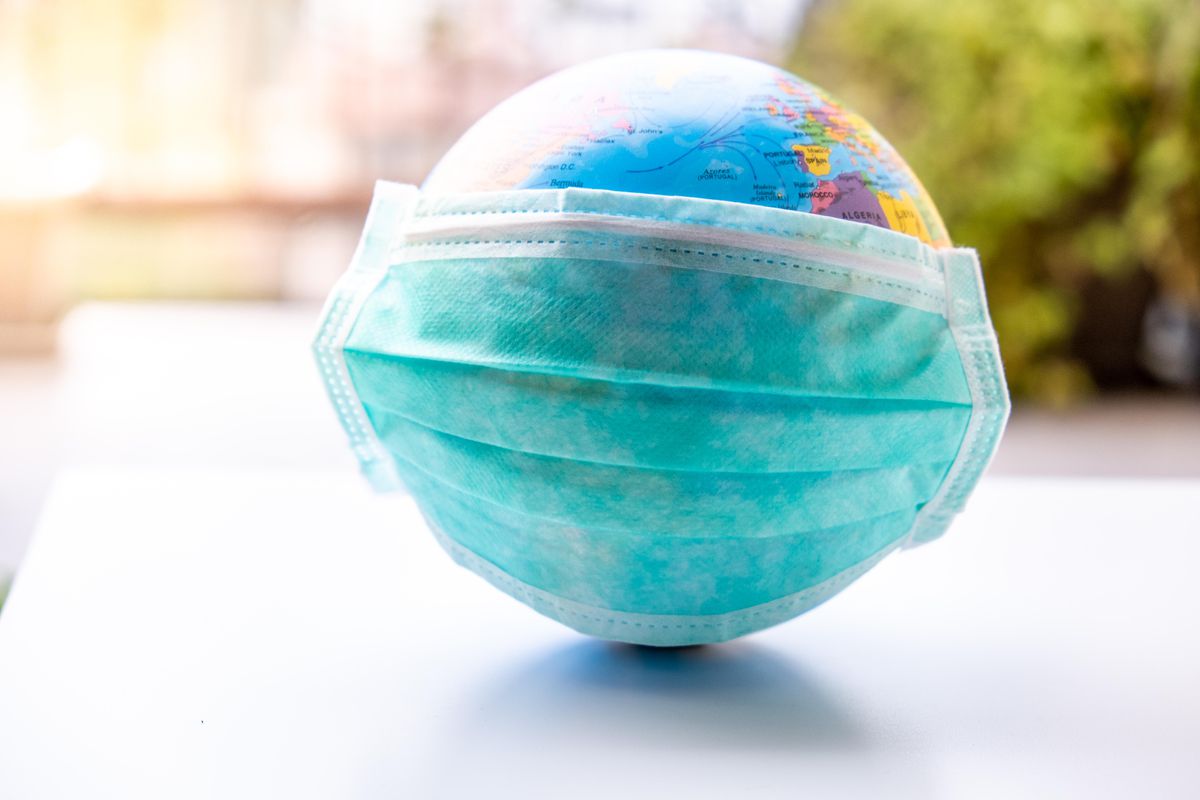By Iylia Marsya Iskandar and Ariani Mohd Nor
The rise of the current COVID-19 pandemic has not changed the climatic and environmental situations that we are in today.
As of 20 December 2020, there have been at least 76 million cases of which 1.6 million were fatalities reported from all over the world. Of course, the worlds main priority today is to get this over with so we could lead a ˜normal life again “ but how many have thought about our dying planet in the meantime?
In a report by BBC News, the pandemic has actually done so little towards the improvement of climate change. The lockdown at the beginning of the year has only helped with reducing carbon emissions by 17 per cent of its usual total in April 2020, as compared to its usual concentration in 2020.
Moreover, there are also zero signs of our ozone layers slowing down its depletion as existing gases are still at an all-time high.
So, what actually gives us in terms of climate change, during the pandemic?
The COVID-19 pandemic has delayed international climate negotiations such as the UN Climate Change Conference (COP26) and the UN Ocean Convention 2020 that were supposed to convene in November 2020.
When the world went into lockdown early this year, we saw a lot of interesting social media posts that give us a brief comic relief about what is happening to our Earth today.
However, these pictures on the internet are just a surface of what the Earth had to experience during the pandemic.
The pros and the cons
There is really no doubt anymore that the pandemic has helped nature some way.
In a report by the NCBI, reduction of air pollution due to the lessened use of fossil fuels have become apparent in many regions such as New York where almost 50 per cent of its air pollution levels have decreased following the lockdown orders.
Following the drop of air pollution is the drop of greenhouse gas emissions “ which may actually help combat climate change if our lockdown-related activities were resumed non-stop.
In countries such as India where water pollution is constantly at an all-time high, the pandemic lockdowns have helped significantly with the absence of industrial pollutants in rivers such as the Ganga River.
But according to Al-Jazeera, these positives are overlooking all the numerous negative impacts the Earth has had to endure.
Starting with the very obvious “ increase of single-use biomedical waste within our society.
The usage of disposable masks, gloves, and the use of Personal Protective Equipment (PPE) in health sectors with nowhere to dispose of them except the landfill is definitely going to leave a mark on Earth “ in environmental terms.
It is undeniable that it is almost impossible to find cheap and accessible alternatives. However, we cannot constantly ignore the fact that it is harming our environment and the landfill.
Wuhan, China has reported more than 240 metric tonnes of medical waste every day during the outbreaks prime period, which is almost a whopping 190 metric tonnes higher than its normal weight. According to Asian Development Bank, similar increases are also being experienced by South-East Asian countries such as Malaysia, Philippines, and Vietnam.
PPEs, mostly used by hospital workers and the pandemic front-liners, are mostly made out of nonwoven plastic materials which can provide protection from liquids and droplets.
Disposable face masks are also used on the daily, which increases risks of environmental pollution.
As it has been reported that the virus can live on surfaces if not disposed of properly, there is a very small chance that people would give up these disposables unless they are convinced enough.
Speaking of wastes, have we thought about our municipal and domestic wastes while we are at home?
Being at home not only calls for more take-outs, but also online shopping purchases, where most of the packaging is made with plastic. Plus, many have neglected disposing them in recycling bags, which has created more hassle and harm towards the environment.
It is really time for us to reflect on the things we, humans, have been doing to our planet. As we suffer through the pandemic together, we need to be mindful of the things we put the Earth through.
Ways we can help with the climate change
As humans become the parasites of Earth, lets think about how we can return the favour to our home planet.
While we cannot fully mend the damage done by big corporations and big companies (which contributes too much to the Earths current damages), little changes need to be made in order for big changes to happen.
Reduce, reuse, and recycle
While its not easy to tell yourself to reuse, reduce, and recycle especially during these times where people would be wary to reuse materials that could possibly contain the virus. However, we can always sanitise before use and make sure your food is clean before you consume it “ which is not different from what we do before the pandemic.
The popular bubble tea franchise, Tealive, has launched the ˜straw-less reusable cups to make reusing cups easier and have even released their own bubble tea reusable cups and straws to match their consumers who are more comfortable with using straws as well.
Starbucks, the international brand, also offers discounts for whenever customers use their special tumbler to buy their products to reduce the use of their plastic cups and are in a continuous effort to replace straws with ˜nitro lids for cold drinks.
Usage of eco-friendly products
During the pandemic, the option to use reusable masks are available, according to New Straits Times. Although they are not as effective as disposable masks, non-medical cloth or fabric masks that can be reused must fit the criteria recommended by the World Health Organisation and should consist of materials that can filter out air particles.
The ideal criteria of cloth masks, according to the Ministry of Health, Malaysia, in accordance with the World Health Organisation, is that the mask should have at least three effective layers: –
- First layer: Layer should be made with hydrophilic materials to ease breathing, such as cotton or cotton blends.
- Second layer: Layer should be made with hydrophobic non-woven materials to enhance filtration.
- Third layer: Final layer, the outermost layer, is also made with hydrophobic materials to repel any water or air droplets and can limit any direct contact of bacteria into the mouth and the nose, such as polypropylene or polyester.
For example, the famous fast fashion brand Uniqlo has begun the commercialisation of the cloth mask called the AIRism mask. Its technology claims to filter out 99 per cent bacteria and pollen, which is suitable for daily use during the pandemic.

The usage of reusable cloth bags such as tote bags and shopping bags are also encouraged. As Malaysia has stepped up their game to charge 20 Sen for every plastic bag purchase in shops, many have resorted to bringing their own bags.
Reducing carbon footprint
Carbon dioxide emissions are the output of the burning of fossil fuel-related products such as the manufacture of cement.
Carbon footprints are greatly affected by transport as fossil fuels are used for engines “ which is why we see a thickening concentration of air pollution and greenhouse gas.
There are actually a number of interesting ways to reduce carbon footprints; from discouraging the fast fashion industry, eating less meat, and even pertaining to a healthy lifestyle by not smoking. However, we find that the easiest way for us to lessen our contribution to the carbon footprint effect is using less transport in general.
Therefore, when the pandemic ends and we are free to move around, it is definitely high time for us to bring back the nations economy while also reducing carbon emissions by utilising the public transportation and carpooling. This is also a chance for us to build a healthy lifestyle by exercising through walking, jogging, and even running “ anything that could reduce the number of cars on the streets.
As it was proven that our world could actually get better if we tried our best, maybe we really should be trying our best. Think about the money we could actually save in the long run by incorporating activities such as eating healthier, reusing and recycling materials, and building exercise into our day by walking or biking more often into our daily lives.
This is our one and only home. Experts predict that in 30 years, we might not even have a home to live in anymore.
As we try to live our best lives, remember that there is no Plan B, no home for us and our children to live in if Mother Nature takes its course.***
(This article is written as part of special reports assignment for Feature Writing class)
